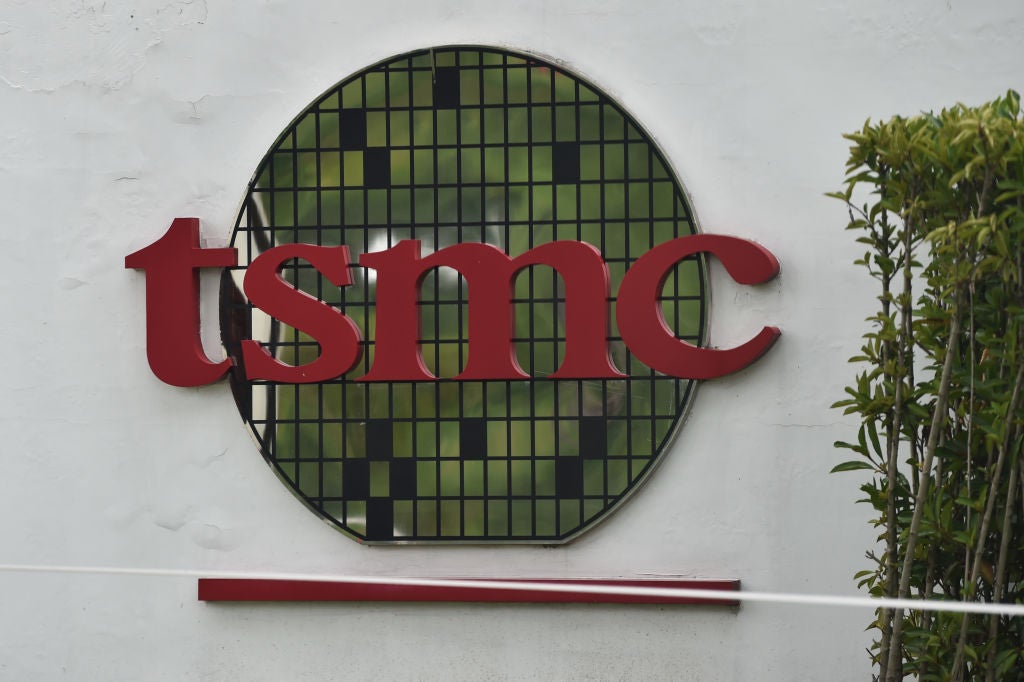
While China and the US represent the two largest buy-side markets for semiconductors, they only rank fourth and fifth, respectively, in the manufacturing of chips, according to the Centre for Strategic and International Studies (CSIS).
The next decade will see both countries prioritising their onshore manufacturing capacity to enable economic growth and avoid the severe global chip shortage seen in 2021 after the Covid-19 crisis. On 28 July 2022, US Congress passed the Creating Helpful Incentives to Produce Semiconductors for America Act, colloquially known as the Chips Act, which includes $52bn of incentives designed to onshore semiconductor manufacturing capacity. Although the passing into law of this congressional act is momentous for the future of the global semiconductor industry, it is just one moving part in a global reshuffle in which foreign direct investment (FDI) will play a critical role.
FDI’s role in resolving the semiconductor shortage
The highly interconnected global semiconductor supply chain relies on free trade to move materials, equipment, intellectual property (IP) and assembled products across the world. Semiconductors are the world’s fourth most traded product after crude oil, refined oil and cars, according to the Semiconductor Industry Association (SIA), and the cross-border trade and investment dynamic of this industry is likely to become ever more complex in the rush to build onshore capacity. Attracting FDI in semiconductors and free trade within its supply chain have reached a level of critical national importance: it is not a stretch to say that global economic and technological supremacy may hinge upon this single point of potential failure as both political and practical challenges abound.
These challenges are not the only potential stumbling blocks to onshoring semiconductor manufacturing capacity. The SIA has estimated that to migrate the integrated global supply chain to equivalent “self-sufficient” local supply chains in each region, while meeting current levels of semiconductor consumption, would require at least $1trn in investment, resulting in a 35–65% overall increase in semiconductor prices and ultimately higher costs of electronic devices for end users.
The US leads the world in most knowledge-intensive areas of semiconductor production. In 2019, half of the top 20 chip design companies and four of the top five semiconductor electronic design automation and core IP companies by revenue were headquartered in the US, according to the CSIS. In contrast, three-quarters of the world’s semiconductor manufacturing was concentrated in north-east Asia. For less skilled and capital-intensive activities in the manufacturing supply chain, such as assembly, packing and testing, China ranked first in global market share, followed by Taiwan and Malaysia.
Where are the choke points in the semiconductor global supply chain?
The most significant choke point in the global semiconductor supply chain lies in advanced manufacturing capacity, for which Taiwan and South Korea have a combined 100% of the global manufacturing capacity in seven-nanometre (nm) and 5nm chips. Boston Consulting Group estimates the split as South Korea (8%) and Taiwan (92%). This monopoly means disruption by natural disasters, infrastructure problems or geopolitical conflicts may result in repeated and severe global chip shortages.
How well do you really know your competitors?
Access the most comprehensive Company Profiles on the market, powered by GlobalData. Save hours of research. Gain competitive edge.

Thank you!
Your download email will arrive shortly
Not ready to buy yet? Download a free sample
We are confident about the unique quality of our Company Profiles. However, we want you to make the most beneficial decision for your business, so we offer a free sample that you can download by submitting the below form
By GlobalDataDisruption is still a clear and present danger. Taiwan’s semiconductor company, TSMC, which has a global monopoly on supplying 5nm chips, is dealing with increasing difficulty in power and water supplies, according to GlobalData principal analyst Michael Orme. In fact, a number of widespread blackouts across the island were reported in March 2022 in addition to others over the past five years.
“There is also a shortage of engineers as the older generation of engineers retires and younger ones try to find ways to earn more money on the mainland [China], whose shortage of semiconductor engineers to work in its fabs is acute,” says Orme, who adds that this comes despite the Taiwanese government doing all it can to clamp down on migration to the mainland.
The US’s dependency on Taiwan’s advanced semiconductor manufacturing capacity has made Washington bureaucrats ever more determined to onshore TSMC’s operations as soon as possible. Congress's Chips Act has TSMC firmly in its sights, according to Orme. “Particularly as Samsung is no match for TSMC in process technology for logic chips and Intel is still at least a couple of chip generations behind," he adds.
The two US congressional chambers' agreement on 28 July to unlock the $52bn in subsidies proffered under the Chips Act will come as welcome news to many. However, a significant minority of congressional opposition to the act views it as 'extortion' in favour of Intel and TSMC. Using US taxpayers' money to build Intel and TSMC’s US semiconductor manufacturing capacity is viewed in some quarters as unethical while both companies continue to turn over high-margin quarterly revenues of around $17bn each. There is also opposition to the fact that the Chips Act applies to foreign companies as well as domestic ones, with those foreign companies already receiving government subsidies at home in Taiwan and South Korea, for example.
Yet many believe (including US President Joe Biden, an overwhelming number of Democrats and most Republicans) that the Chips Act is critical for future US economic competitiveness as well as its national security – the US military relies on advanced semiconductors, all of which are currently imported. Highlighting the urgency of the issue, Jimmy Goodrich, vice-president of global policy at the SIA, said in a LinkedIn post on 19 July 2022: “Congress must fund Chips now before it’s too late,” describing the the Chips Act passing the House as "A historic day for the US semiconductor industry, the SIA and all its members."
The passing of the US Chips Act into law will bring relief to many. Of the top three global semiconductor manufacturers, TSMC and Intel had threatened to pause their US greenfield projects until the Chips Act funds were unlocked, according to Orme. “TSMC and Intel will be equally frustrated by the congressional foot dragging on the CHIPS Act funding,” he adds. Intel’s plans relied on it receiving at least $20bn under the Chips Act to deliver the onshore foundry capacity the US government is hoping for.
Sources say TSMC had insisted that until the US begins to cover the extra cost of building and operating a 5nm fab (fabrication plant) in the US versus in Taiwan (a cost said to be five times greater), the company would have to delay its $12m greenfield fab project in Phoenix, Arizona, which will reportedly produce 5nm chips by 2024. Unlike Intel and Samsung, TSMC has no vested interest in diversifying beyond Taiwan itself, where all leading-edge research and sub-5nm production is likely to remain, says Orme.
Funding is not the only challenge. It is said that TSMC cannot get equipment, materials and labour needed to complete the construction of its new US fab, while asserting that Intel, also investing $20bn in two new fabs in Colombus, Ohio, is benefitting unfairly from preferential local supplier treatment, according to Orme. All of which points to a delay in TSMC completing US operations by a minimum of six months and not moving to mass production until 2024/25. “Until then, assuming no hitches, the Pentagon and the US National Security Agency will have to rely on supplies of 7nm chips and below from Taiwan,” says Orme.
It will take time for the incentives to come to fruition in terms of adding production capacity, agrees Ajit Manocha, president of semiconductor industry association SEMI. “Given the extreme complexity of semiconductor manufacturing, fabs can take multiple years to be built and have a production line established, and it can take several additional years to ramp up additional production lines to reach full capacity," he says. SEMI's World Fab Forecast report is tracking 92 new fabs or major expansions expected to come online from 2020 to 2024 (an unprecedented number, according to Manocha), with 12 of these in the US. "Each of these fabs and the new ones that will benefit from incentives will bring production capacity online in incremental steps over time,” he adds.
European government incentives for semiconductors more forthcoming than the US
Intel has found expansion into other jurisdictions easier than on its home turf: namely Europe. In February 2022, the European Commission announced the European Chips Act (which is not yet fully approved in the European Parliament), which includes $11bn (€10.76bn) in subsidies for semiconductor R&D and manufacturing capacity with a view to quadrupling Europe’s production capacity by 2030, as well as laying out measures to avoid future supply chain disruptions.
SEMI welcomed the European Chips Act, with SEMI Europe’s president, Laith Altimime, stating publicly in July 2022 that Europe’s Chips Act will not only address current chip shortages but will also build future supply chain resilience. As a result of the European Commission’s Chips Act, Orme says Intel has judged it feasible to build a megaproject in Magdeburg, Germany, to include two large fabs and a foundry service, to begin in 2023, although Orme is circumspect about the plans. “This remains to be seen,” he adds.
Elsewhere, in India, a $10bn (Rs872.28bn) scheme to try to attract foreign companies including Intel is under way. South Korea’s National Assembly has also made moves by approving rules and tax incentives to support its domestic semiconductor industry, while China has established 15 local semiconductor funds with a goal of supplying 70% of its own chips by 2025.
China may well succeed in becoming self-sufficient in larger, legacy chips, but “homegrown” capacity in leading-edge chips is not really an option unless a domestic company already exists with the required technology capabilities as well as an extremely strong balance sheet (such as Intel in the US), says Scott White, CEO of UK-based PramatIC Semiconductor. “Even with government support, a new silicon fab still requires more than $10bn in investment by the company, not counting the R&D needed to develop the process," he adds. "Intel has been struggling to keep up with TSMC, and second-tier players such as Global Foundries have had to back away entirely from chasing Moore’s Law (the law for which computing power increases exponentially while chips become ever smaller). So cross-border investment is really the only viable approach.”
However, even cross-border investment is highly unlikely to completely rebalance global capacity, according to White. “New fabs in the US and EU will somewhat increase local manufacturing but not enough to cover all required demand, and so for Western semiconductor customers there will remain a significant supply chain risk,” he says.
In addition, the semiconductor industry moves towards a major inflection point around 2025 with the widespread deployment of 5G, and increasingly sensor-led environments in the era of the internet of things. However, many believe that more advanced 5nm and 10nm chips required for emerging technologies will not be the most pressing problem by 2025 but rather a dearth of legacy chips at 28nm and above (particularly 90/130nm and above, according to White). Indeed, Sumco, a top global supplier of larger chips, has publicly said that it has sold out of 300mm wafers until 2026.
“While these [300mm wafers] are not used for the high-end applications that tend to make exciting headlines, such as processors for the latest smartphones or AI chips for self-driving cars, they are still critical for most electronics and related downstream industries," says White. "For example, car production in the UK was held up by the lack of a simple $1 controller for heated seats. In these areas there is huge opportunity to innovate with new technologies and business models that can alleviate future supply chain issues.”
No matter the size of the chip, the size of the market or the size of the company, all variations of chip requirements will need the free flow of finished goods and component parts as well as a globally dispersed manufacturing capacity to ensure a steady supply of semiconductors to meet the world's future demand. The opportunity to innovate that White speaks of may just hold the solution to some of the world’s most pressing problems. Much is at stake and so much remains to be seen within a highly complex and globally interconnected industry in full flux.







